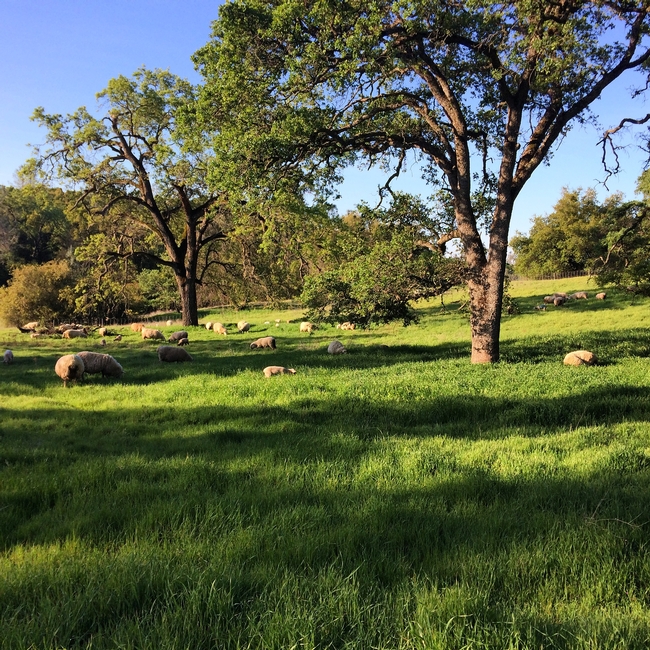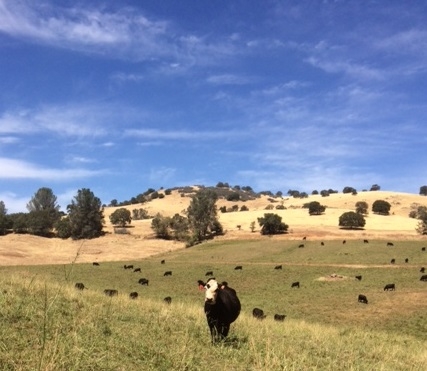Most ranchers track production – pounds of calves or lambs sold, seasonal gain on stocker cattle or feeder lambs, or pounds of wool shorn are all measures of ranch productivity. These are the benchmarks that we compare year-to-year – or across the fence with our neighbors! However, ranches produce more than just livestock – they provide wildlife and native plant habitats, water filtration, fuel reduction, and cultural landscapes. These “ecosystem services” are increasingly valued as important reasons to conserve working ranches.
What are Rangeland Ecosystem Services?
California rangelands are biologically and climatically diverse, and ranchers utilize a variety of public and private lands. Within Placer, Nevada, Sutter and Yuba Counties, working ranches often represent the “wide open spaces” and iconic oak woodlands of our foothill communities. They also provide migration corridors and other habitat values for wildlife. Well-managed grazing land in our 4-county region supports a wide variety of wildlife, including red-legged frogs, burrowing owls, and Swainson's hawks, to name a few. These lands also provide important habitat types, like vernal pools and blue oak woodlands. Yet despite these critical ecosystem services, rangelands have become highly fragmented - and increasing land values make it difficult for the next generation of ranchers to get started.
Payments for Ecosystem Services
Rangeland ecosystem services provide value beyond the market price of your livestock. How can you take advantage of these values?
- Conservation easements allow landowners to realize some of the capital value of their land without selling; rather, the landowner voluntarily exchanges future development rights for payment or tax reductions. As one example, the California Rangeland Trust focuses on funding conservation easements for ranchlands.
- Cost-share programs like the federal Environmental Quality Incentives Program and Conservation Stewardship Program fund on-ranch conservation practices. A local example is the Placer County Water Agency and Placer County Resource Conservation District, which offer cost-share funds for irrigation water conservation efforts.
- Certification and eco-labeling programs help consumers support ranchers directly – rewarding ecologically beneficial management. Despite the potential, many labeling and certification efforts are still under development.
Future Opportunities in our 4-County Region
Suburban growth and a rapidly changing environment in our region makes rangeland ecosystem services even more 
For more reading: http://www.sciencedirect.com/science/article/pii/S0190052814500727
